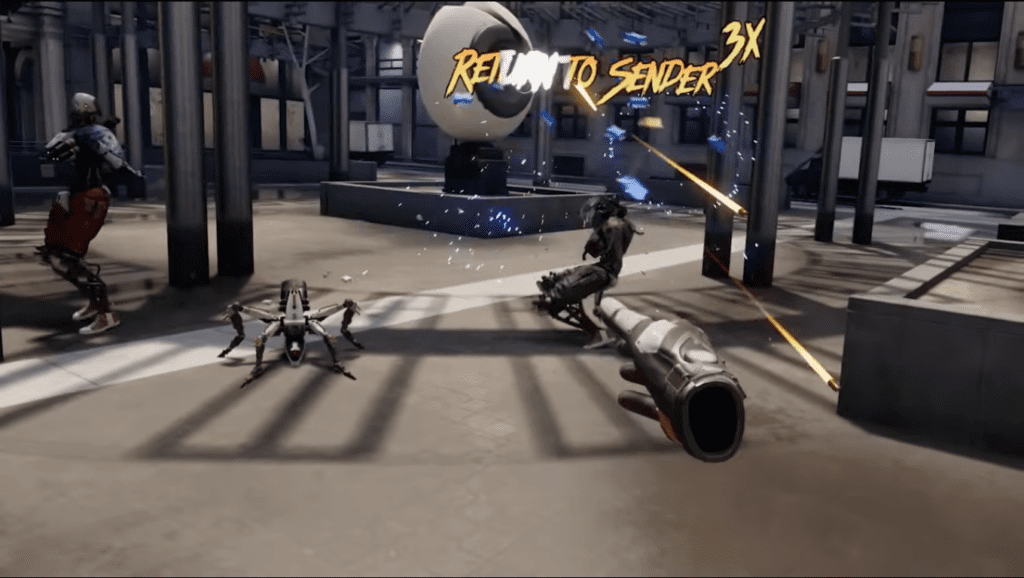Virtual Reality (VR) is rapidly transforming the gaming landscape, offering immersive experiences that were once the stuff of science fiction. With the growing popularity of VR gaming, many developers and businesses are curious about the cost of developing a VR game. Let’s delve into the various factors that influence the cost and provide a detailed breakdown.
Despite having appeared decades ago, it wasn’t until the early 2010s that virtual reality (VR) would take off. As it stands, the technology has become one of the most exciting frontiers in gaming, growing faster than any other platform currently available on the market.
For those not familiar with VR, it’s a technology that allows users to immerse themselves in computer-simulated 3D environments through the use of a head-mounted display, enabling players to freely roam, explore, and interact with the objects within the virtual realm.
Such technology has been well-received by casual and hardcore gamers alike, and specialists expect the global VR market to reach over $60 billion in value by 2027. With this in mind, many developers are considering shifting their gears into VR game development, but how much does a VR game cost after all?
In this article, we will give you some ballpark figures for the development expenses of a VR game, thoroughly explaining the 5 main factors that will affect its total cost.
How much does a VR game cost?
Giving a specific value for the total price of a VR video game is a nearly impossible task. As you will see later in the article, there are way too many factors to consider when estimating its total cost. That said, VR games are still games, and it’s possible to give some ballpark figures.
Fully-fledged tiny VR games, for example, might set you back around $5,000 to $10,000 depending on their complexity – maybe even less if they’re straightforward games to create. However, the average game tends to be more complex, have deeper mechanics, and have higher levels of polish, which will cost developers around $20,000 to $100,000.
On the other extreme of the cost scale, the biggest and most complex VR games (especially those with online multiplayer features) can easily set them back more than a million dollars – like Robo Recall, which cost around $3.8 million to develop according to online estimates.

How much does a VR game cost: preliminary work
The very first steps of a VR game’s development aren’t just a beginning – they’re the crucible where the entire experience is forged. Here, the essence of the game begins to solidify. Concept art takes shape, stories unfold, characters come alive, and the fundamental ways players interact with the world are defined.
This initial stage is a beautiful dance of collaboration. Writers, artists, and designers weave their magic, breathing life into the project’s DNA. Concept art establishes the visual tone, while narratives captivate the imagination. Meanwhile, developers work tirelessly behind the scenes, constructing the core mechanics that will be the backbone of the game.
The significance of this early phase can’t be overstated. Every decision made here sets the course for the entire VR adventure. It’s a meticulous process where the creative spark transforms into tangible building blocks – the narrative beats, the character designs, the core gameplay loops. This collaborative effort is where a team’s unique talents truly shine. From artists defining the aesthetic to developers building the foundation of interactivity, every member plays a crucial role.
But the creative spark isn’t the only fire burning in this early stage. Here, too, the cost of bringing a VR game to life is a critical consideration. These initial decisions have a profound impact on the project’s scope – how complex the mechanics will be, how deep the story goes, and how rich the visuals become. As such, VR development cost becomes a guiding principle, ensuring the project stays on track creatively and financially.
The intricate journey of transforming a concept into a playable VR experience demands meticulous planning and teamwork. VR, in particular, thrives on detail – from the immersive environments to the reactive gameplay elements. That’s why VR game development cost is a crucial aspect that needs to be addressed from the get-go. This includes not just the artistic magic woven by writers, artists, and designers, but also the technical expertise of developers who establish the rock-solid foundation of gameplay.
As the project progresses from the conceptual drawing board to more concrete development stages, the team’s focus shifts. Developers take center stage, refining the core mechanics and weaving them seamlessly with the established narrative and visuals. The development cost, naturally, expands to encompass this broader range of activities – not only creating a captivating story and stunning visuals but also ensuring the entire experience functions flawlessly in VR.
Main factors that influence the development cost of a VR game
As we mentioned before, many things can make your game’s development cheaper or more expensive. This is by no means an exhaustive list, but it includes the most critical ones:
Your VR game’s complexity
It’s safe to say that complexity is the most impactful factor when it comes to costs in game development.
Games with a bigger scope require enormous amounts of man-hours, to which there are only two remedies: take longer to create your game, or hire more people to help you out. No matter which path you take, it will cost you money in the end.
On the other hand, if you’re creating a simple VR game, its development time will be shorter, and you may even be able to create it on your own, which will save you money in the long run.

Where your development team is located
Hiring VR experts in places with higher living standards and wages, such as the United States or most of Western Europe, will likely cost you more than hiring similarly skilled professionals in South America, Eastern Europe, and most of Asia for example.
This is because the cost of living and salaries are generally higher in the US and Western Europe, leading to higher wages for skilled workers. Similarly, regions such as South America often have lower living costs, which makes them a potentially cost-effective solution to VR game development.
That said, this approach is not a perfect one, having disadvantages of its own. You might run into communication issues due to language barriers, leading to potential delays and misunderstandings.
The difference in time zones and work hours can be a nuisance, which might make it difficult to coordinate schedules and meetings. At last, even though it’s possible to find talented VR developers in regions where wages are lower, you might have trouble finding teams with a comparable level of expertise as those in regions with higher living costs.
If you’re able to get past those potential advantages, then you’re in for a very cost-effective solution by hiring VR developers from less fortunate countries.

Gaming platforms for which you will release your VR game
Developing and releasing a game for multiple platforms at the same time is a surefire way to get higher sales. But there’s a catch: it might cost you a lot. Each VR gaming platform has its own unique hardware, software, and specifications that must be accounted for during development.
This means that the game needs to be adapted and optimized to work smoothly on each platform, which might involve changes to the game’s code, graphics, and user interface. Properly porting and optimizing VR games for other platforms can take so much time and money that it might not be worth it for newcomers to the industry.
Additionally, some platforms might have lengthy certification processes, which can add even more to the overall cost of VR game development.

Design and development: creating and perfecting your VR game
VR games are complex products that require significant design and development effort to create a high-quality immersive experience for players. The development process goes through many stages, which include thorough market research, worldbuilding, game design, programming, game art and asset creation, quality assurance (QA) testing, marketing, and many more.
Each stage requires a team of professionals with very specific skills, and more complex games will require larger teams and longer development times, which will make the game more expensive as explained before.
For instance, creating the assets for your VR game and eliminating its bugs are the two most time-consuming aspects of game development. This is not because they are slow professionals: bug fixing sometimes presents itself as a Hydra Problem, where fixing a bug will cause two new ones to appear, and game artists often have to create hundreds (if not thousands) of assets for programmers to implement.
Furthermore, you might have to consider additional costs with software and specialized equipment, which can add up to a small fortune once your team gets big enough. Tools like ZBrush (a 3D sculpting program) will set you back $359 per seat every year; Photoshop costs $20.99 per seat every month; what about your game engine license? There are some free options, like Godot, but the most popular ones – Unity and Unreal engines – will require you to pay every year after hitting certain revenue thresholds.
You see, these costs can add up quickly if you’re not mindful.

Marketing and promotion: making your VR game known
Another factor of VR game development that can leave your wallet crying is marketing. It’s an expensive endeavor, but essential to create buzz around your game, increase its visibility, and generate interest among your target audience. Without a well-planned marketing strategy, even the best VR games are at risk of being a huge failure due to poor sales!
Game promotion is usually an ongoing process that can start well before the development process has commenced. For instance, crowdfunding campaigns and early access programs can be used to generate interest and support for the game well before its release as we’ve seen time and time again.
As a general rule, many successful indie game developers suggest that, for every dollar spent on game development, an additional investment of $0.25 to $0.50 should be made exclusively in marketing efforts, adding to around a third of your total game’s budget. This recommendation holds true for all game platforms, whether it’s a PC, mobile, console, or VR game.

Additional costs
- Software & Hardware: Professional titles require professional tools. Licensing costs for development software can be significant, and an assortment of high-powered hardware (computers, VR headsets, specialized equipment) is essential.
- Music & Voices: Sound is a powerful storytelling tool. While some studios utilize stock audio libraries, most major titles feature original music, sound effects, scores, and voice acting by professional talent. These creative assets all add to the overall development cost.
Breaking down the costs
Here’s a more granular look at where the money might go:
- Programming: This is a major cost, as skilled programmers are needed to bring the game to life.
- Art and design: Creating 3D models, environments, textures, and user interfaces requires skilled artists and designers.
- Sound design and music: Music and sound effects can significantly enhance the VR experience, but hiring professional composers and sound designers adds to the cost.
- Quality assurance (QA) testing: Thorough testing to identify and fix bugs is crucial, especially in VR where user experience is paramount.
- Marketing and distribution: Promoting the game and getting it onto VR platforms can involve additional costs.
Cost-saving strategies for VR development
- Start simple: If you’re new to VR development, begin with a smaller, more manageable project. This allows you to learn the ropes and build your skills without a huge financial investment.
- Embrace free and open-source tools: Many excellent VR development tools are free or open-source, reducing software licensing costs.
- Team up with collaborators: Find other passionate VR enthusiasts to work with, sharing the workload and potentially the financial burden.
- Target mobile VR platforms: Developing mobile VR platforms like Google Cardboard can be less expensive than creating a high-end PC VR experience.
Wrapping it up
As you have seen in this article, VR games come in all shapes: both cheap and expensive. While most games have a price tag of $20,000 to $100,000, their cost can go lower for simple and quick VR titles or grow a hundredfold for the biggest and most ambitious projects. It is a costly endeavor indeed, but the potential rewards can far outweigh all the investment.
The cost of developing a VR game can vary widely depending on the game’s complexity (which will warrant more dedicated professionals), the geographic location of the hired team(s), the number of platforms for which the game will be released, and the general development pipeline.
To keep the expenses under control, it’s crucial to carefully plan the development process, making sure to allocate resources where they matter the most. Additionally, spending around a third of your total budget on marketing efforts can help your game reach its intended audience and generate enough revenue to recoup its costs – and hopefully make you a lot of money!
It’s also critical to note that despite being a relatively new area, the VR gaming market is highly competitive, with many developers fighting for the attention of a rapidly growing, but still niche audience.
To succeed in this environment, creating a game that stands out from the competition is a must. This means not only offering a unique and engaging gameplay experience, but also ensuring that the game’s visuals, sound, controls, and user experience (UX) are as stunning and as optimized as possible. And that’s where we can help you out!
At Main Leaf, we understand that creating incredible VR games can be a daunting and time-consuming task. But fear not, we’re here to offer a one-stop solution for game development! Our dedicated team of 70+ experts has the skills and experience needed to create an immersive game that will leave your audience itching for more.
We have the right skills and expertise to help you create a VR game that stands out from the competition at blazing-fast speeds, developing everything from scratch and putting together a fantastic experience, as we have done for the past 13 years.
So why wait? If you’re ready to take your game development to the next level, request a game quote today to start bringing your vision to life!

